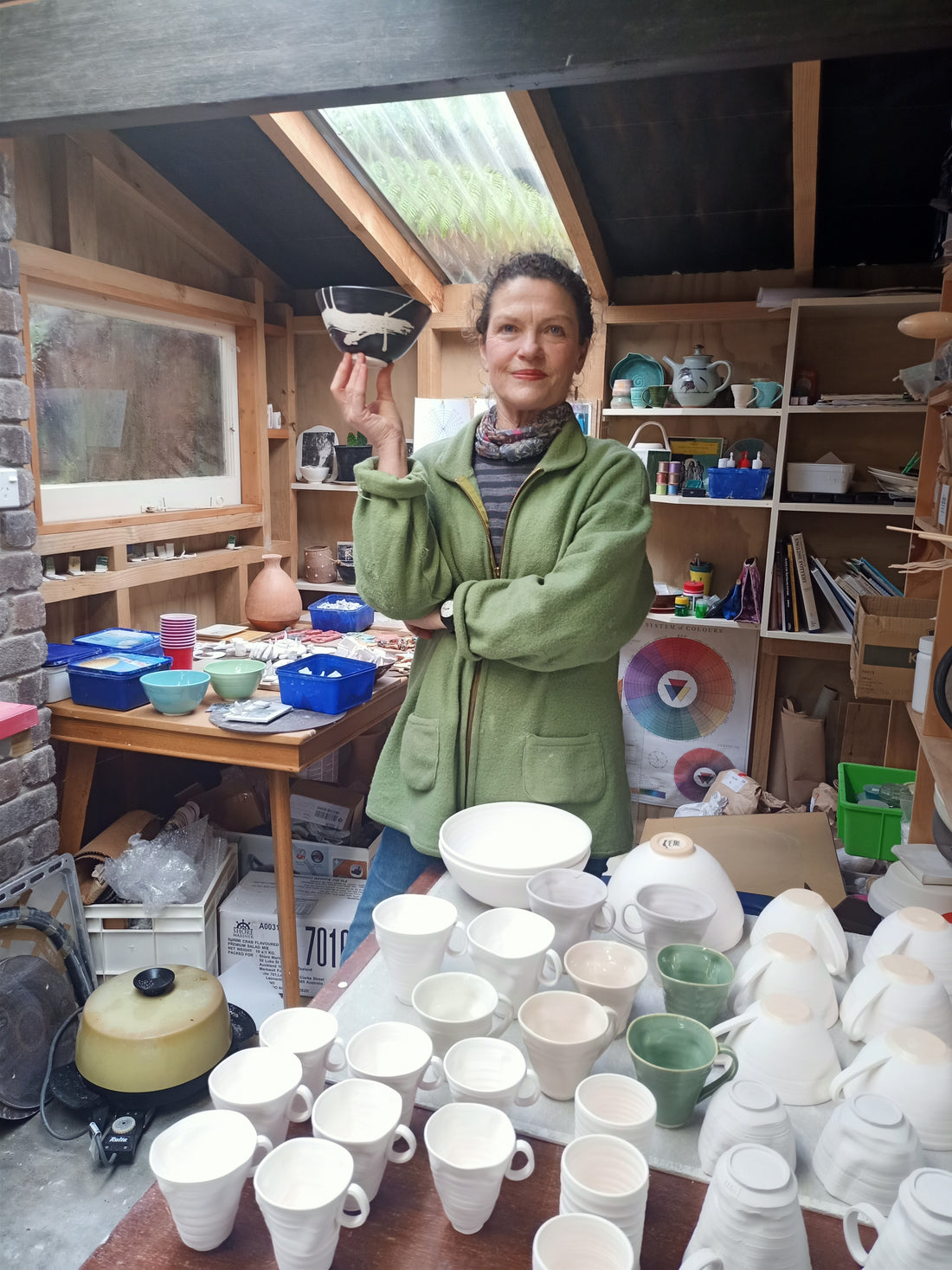Jody Martin has been a patron of our café and store for many years. I had no idea she was such a talented ceramicist until her adoring partner mentioned I should have a look at some of her ceramics. After a lot of cajoling, she eventually succumbed and presented me with her beautiful work. It was a no brainer – we had to sell Jody’s ceramics!
I asked Jody to share her story.
For many years I dabbled with many creative mediums until I decided I needed to stop dabbling and pursue one creative interest fully. I chose ceramics.
Up until 10 years ago I was hand building in clay but then I decided if I was to understand and appreciate pottery in depth I needed to learn to throw. I did a five day, live-in, throwing workshop in Cornwall, England and from then I have been applying myself to hand throwing domestic ware on the potters wheel.
I work in porcelain, terracotta and stoneware and throw my pieces on a Bernard Leach kick wheel. Pottery is a slow process, and it takes years to become a proficient thrower. New ideas take time to evolve. Currently I am developing my own glazes.
I am working on 2 styles.
My work is often inspired by the Japanese Zen aesthetic. The Japanese ceramic artist, Takeshi Yasuda, has influenced my technique. Historically, the word “style” has a different meaning in Japan. We think of style as being attributed to a single person but in Japan it is the importance placed on the making of an object and the spirit inherent in things and the values that they symbolise. I prefer this meaning.
My style is about finding stillness and simplicity in the work but imbued with the hand and character of the potter. Hence the distortions I sometimes make in the pieces with my fingers. I would like the person who uses my cups to enjoy the aesthetic as well as the touch. You can use the handle, but it is more sensual to hold the entire cup in your hands.
My other style is inspired by the enso. Enso is a zen buddhist symbol, meaning circle. The circle is represented in many things both worldly and philosophically and I love this aspect of it. The enso can mean the cyclic nature of life, strength, the meditative state, imperfection and elegance. My pottery is also formed by the circular motion of the wheel. Cups and bowls and vases are primarily circular. The throwing process is very focussed and meditative.
But the circle has meaning in other cultures, and I like to reflect on the various symbolisms.
Here is a wonderful quote from the great American Indian, Black Elk – 1863-1950. He was an Oglala Sioux holy man …
“You have noticed that everything an Indian does is in a circle, and that is because the power of the world always works in circles, and everything tries to be round … the sky is round, and I have heard that the earth is round like a ball, and so are all the stars. The wind, in its greatest power, whirls. Birds make their nests in circles, for theirs is the same religion as ours … even the seasons form a great circle in their changing, and always come back again to where they were. The life of a man is a circle from childhood to childhood, and so it is in everything where power moves.”
I like throwing when you get into a rhythm, and it is focussed and meditative. I also like to hand carve my cup bases. This is a bit unusual. There is something very appealing about hand carving – tactile and a bit irregular in its finish. The base is always unglazed so you can see and feel the rawness of the clay.
The history of pottery is amazing. The fact that pieces of pottery are some of the earliest artifacts known to man and that a piece can survive for centuries with the touch of the individual potter still imbued in the work. Then there are so many ways it has been developed by so many cultures around the world – all so different. It seems there is something to learn from all these styles.
I have not taken any formal education in the arts, but I have done many workshops with outstanding NZ potters such as Duncan Shearer, Laurie Steer and Richard Stratton. I always learn a lot through workshops, but the biggest learning curve is applying what you have been taught and trying out knew ideas.
Outside of pottery I have a small gardening business and I undertake oral histories, producing digitally recorded life stories and turning that into a book form. These interests compete with pottery time, and I am always juggling them. I get great pleasure doing all of them.

